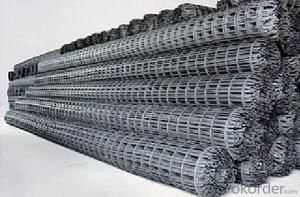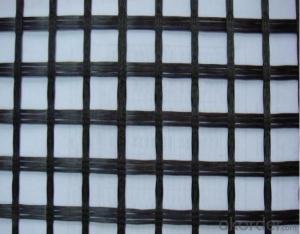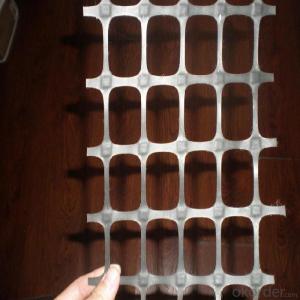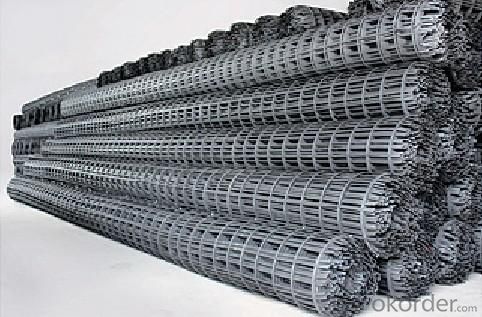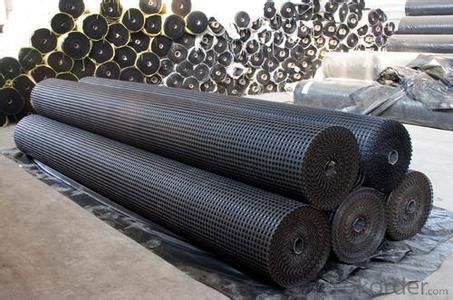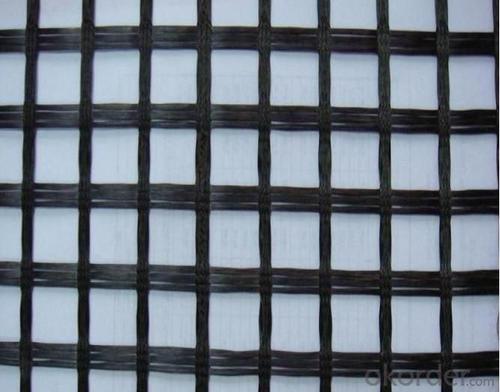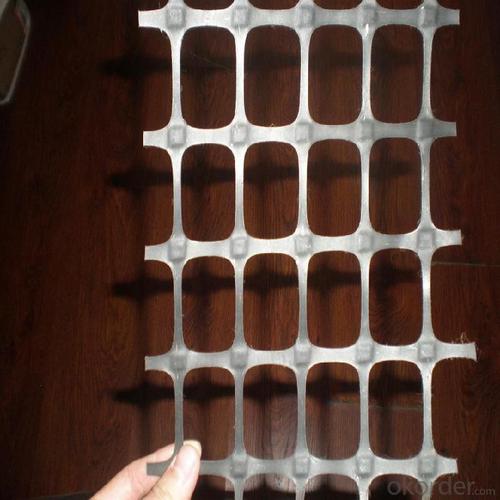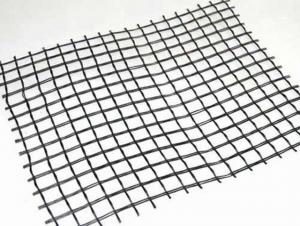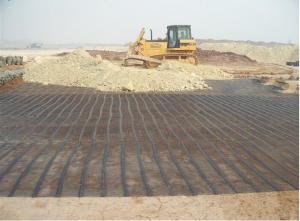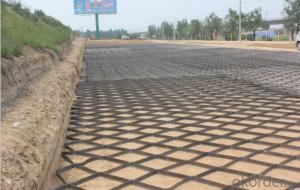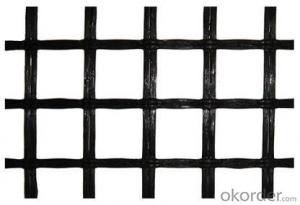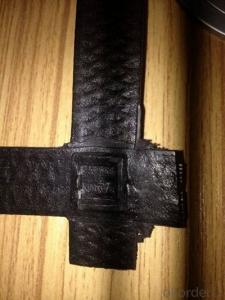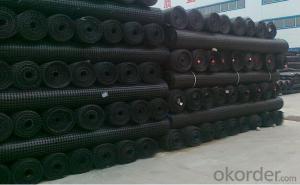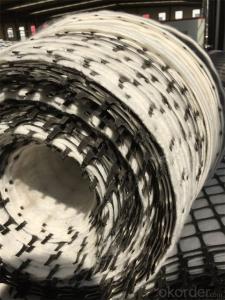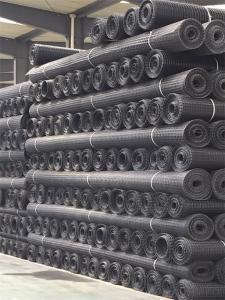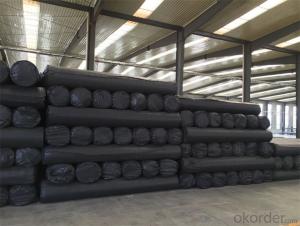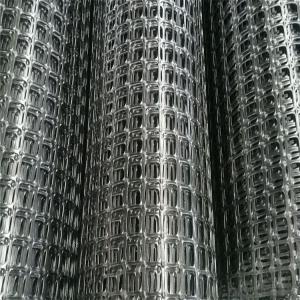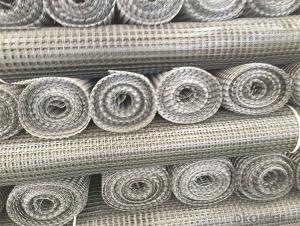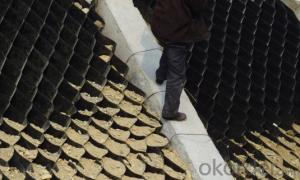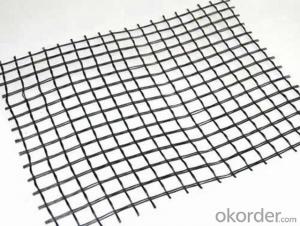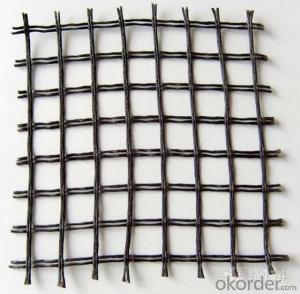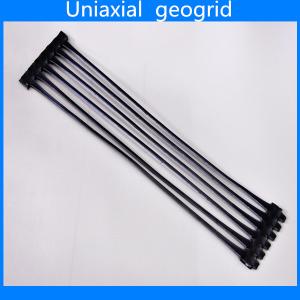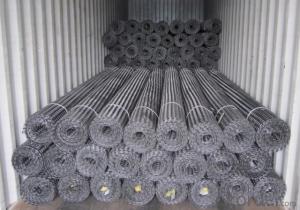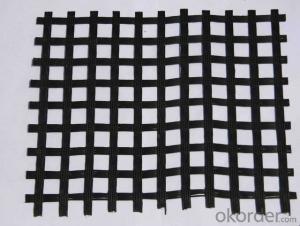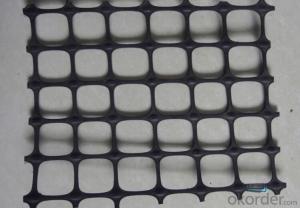Cellular Confinement System of Geocells - Biaxial Geogrid for Softbed Foundation
- Loading Port:
- Qingdao
- Payment Terms:
- TT OR LC
- Min Order Qty:
- 30000 m²
- Supply Capability:
- 1000000 m²/month
OKorder Service Pledge
OKorder Financial Service
You Might Also Like
Structure of Biaxial Geogrid
Biaxial Plastic Geogrid is a kind of new favorable earthwork base material to strengthen the road surface and roadbed.This product is made by weaving and covering fiberglass filament. It is featured by high vertical and horizontal tensile strength, low unit extension, high flexibility, and favorable high and low temperature resistance. The products after surface covering own the favorable property of alkali resistance and aging resistance.
Main Features of the Biaxial Geogrid
fiberglass geogrids
Corrosion resistance, no long-term creep, long life span.
Good physical and chemical stability and good thermal stability.
Resistant to fatigue cracking, high-temperature track and low temperature shrinkage cracking.
Tensile strength:MD/CD:30 ~ 150kn/m.
Light weight, high tensile, corrosion resistance
Road maintenance and reinforcement
Packaging & Delivery
| Packaging Details: | PP bags or PE film. Or Packed as customers' requests. |
| Delivery Detail: | 10-20days after the contract is effective |
Biaxial Geogrid Images
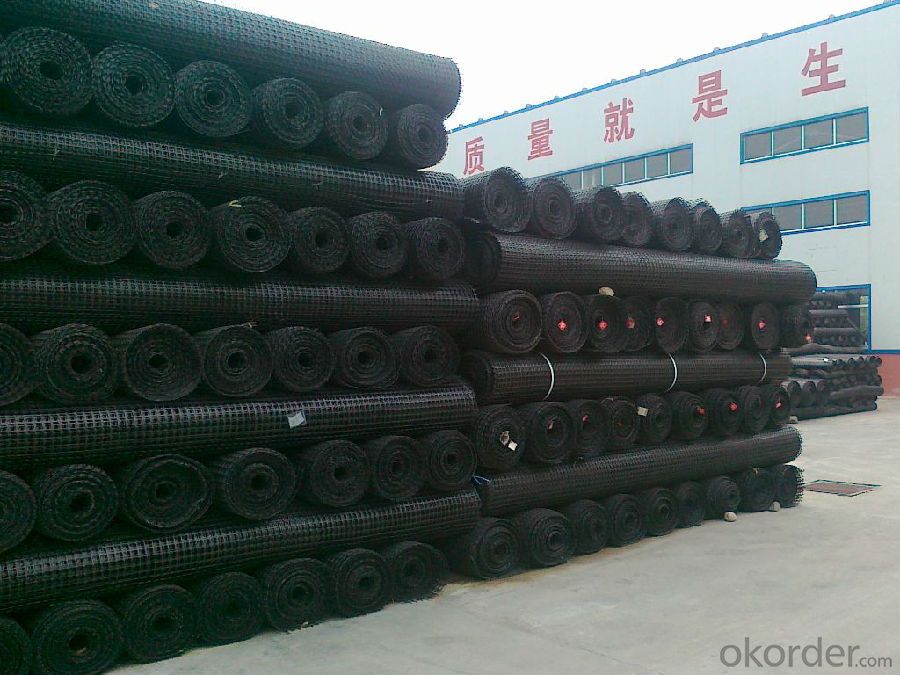
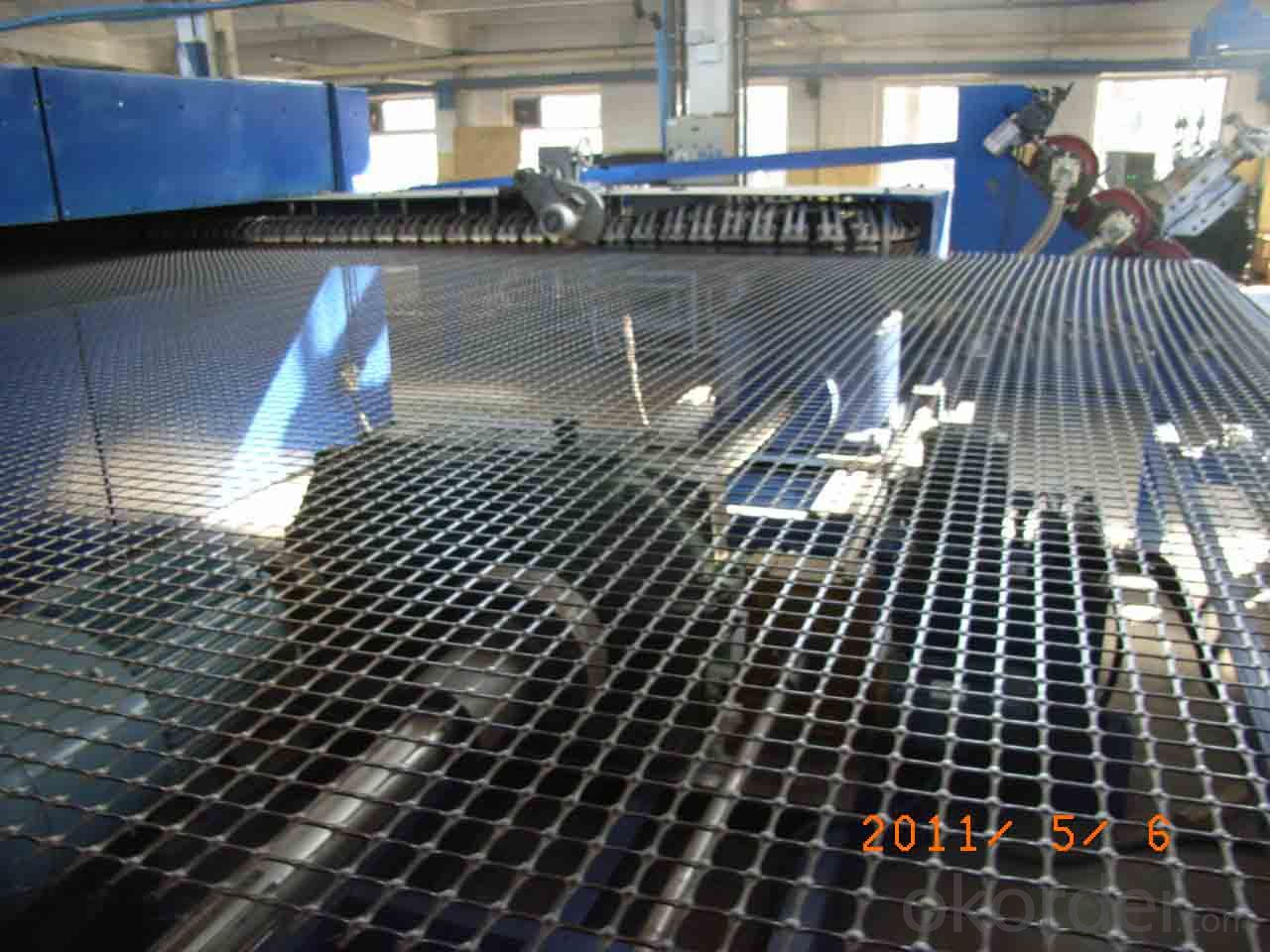
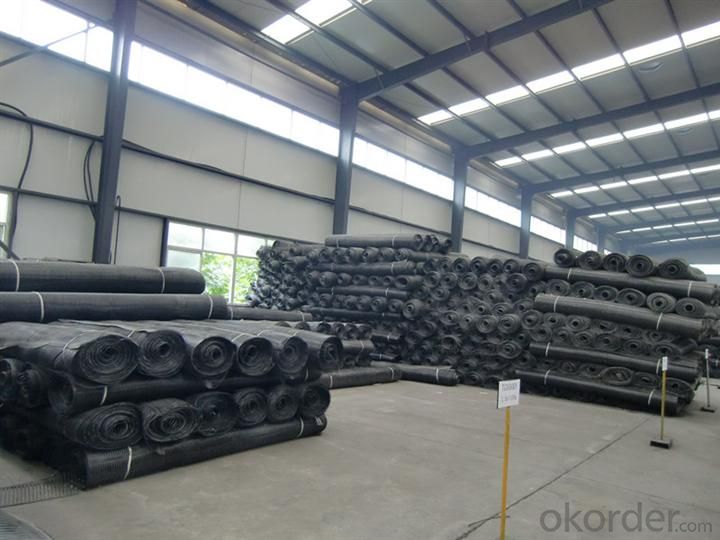
Biaxial Geogrid Specification
Converting old cement concrete road into composite road.
Restraining reflection cracking caused by block shrinkage.
Preventing and controlling the cracking caused by new and old combination and uneven settlement.
Road extension.
Reinforcement of soft soil foundation and overall strength of roadbed
| Specification | EGA30-30 | EGA50-50 | EGA80-80 | EGA100-100 | EGA120-120 | ||
| Mesh size(mm) | 25.4×25.4or12.5×12.5 | ||||||
| Breaking strength≥(KN/m) | Warpdirection | 30 | 50 | 80 | 100 | 120 | |
| Across warp | 30 | 50 | 80 | 100 | 120 | ||
| Elongation at break≤(%) | Warp direction | 3 | |||||
| Across warp | 3 | ||||||
| Elasticity modulus(GPA) | 67 | ||||||
| Thermal tolerance() | -100~280 | ||||||
FAQ
We have organized several common questions for our clients,may help you sincerely:
Q: How about your company?
A:Our company are one of the largest geosynthetic products supplier in the world.We have the products experience more than 20 years.Already export to USA/Germeny/Australia/Zambia/Brazil etc.more than 20 countries.Almost 10years.Our products including Geocell/Biaxial Plastic Geogrid/Geomembrane/Geotextile/Geonet etc.
Q.Does your products have good qualitity?
A:Yes,we have do many big projects such as the 2008 Beijing Olympic BIRD NEST. Divert water from the south to the north project. And our products have CE certificate also.
Q:How long can we receive the products after purchase?
A:In the purchase of product within three working days, We will arrange the factory delivery as soon as possible. The pecific time of receiving is related to the state and position of customers.Commonly 15-20 working days can be delivery.
- Q: How do geogrids improve the performance of geogrid-reinforced earth walls?
- Geogrids improve the performance of geogrid-reinforced earth walls by providing tensile strength and stabilizing the soil, which helps to prevent the wall from sliding or collapsing. They distribute the forces exerted on the wall more evenly, reducing stress concentration and increasing overall stability. Additionally, geogrids enhance drainage and soil compaction, further enhancing the wall's performance.
- Q: Who has the "highway geosynthetics geogrid" specification
- JT/T925.1 2017 highway engineering geosynthetics
- Q: Are geogrids suitable for reinforcement of embankments on soft soils?
- Yes, geogrids are suitable for reinforcement of embankments on soft soils. Geogrids provide a strong and stable reinforcement layer that helps distribute loads and improve the overall stability of the embankment. They also help to prevent soil erosion and increase the bearing capacity of the soft soils, making them an effective solution for reinforcing embankments on such terrain.
- Q: How do geogrids improve the performance of geosynthetic-reinforced slopes in seismic zones?
- Geogrids improve the performance of geosynthetic-reinforced slopes in seismic zones by providing increased stability and reducing the potential for slope failure. These geosynthetic materials act as a reinforcement layer within the slope, distributing and dissipating the seismic forces more effectively. By enhancing the tensile strength and shear resistance of the slope, geogrids minimize the displacement and deformation during seismic events, thereby enhancing the overall stability and safety of the slope in seismic zones.
- Q: How do geogrids improve the performance of geosynthetic-reinforced walls?
- Geogrids improve the performance of geosynthetic-reinforced walls by providing additional tensile strength and stability to the structure. They act as a reinforcement material, distributing the load and preventing soil movement or wall failure. Geogrids also enhance the overall durability and longevity of the wall by reducing the potential for settlement, soil erosion, and deformation.
- Q: How do geogrids enhance the stability of landfill slopes?
- Geogrids enhance the stability of landfill slopes by providing reinforcement and preventing soil erosion. They are placed within the slopes to distribute and transfer the weight of the landfill, reducing the stress on the soil. This helps to prevent slope failure and maintain the integrity of the landfill structure. Additionally, geogrids increase the friction between soil particles, improving the overall stability of the slope.
- Q: Are geogrids suitable for use in road widening projects?
- Yes, geogrids are suitable for use in road widening projects. Geogrids are commonly used in civil engineering projects, including road construction and widening. They provide reinforcement and stability to the soil, reducing the potential for settlement and improving the overall strength of the road. Geogrids also help to distribute loads more evenly, increasing the lifespan of the road and reducing the need for maintenance.
- Q: Are geogrids suitable for reinforcement of soft subgrades?
- Yes, geogrids are suitable for reinforcement of soft subgrades. Geogrids have been proven to effectively improve stability and strength in soft subgrade soils by distributing loads and reducing settlement. They provide additional tensile strength, preventing excessive deformation and enhancing the overall performance of the subgrade.
- Q: What are the advantages of using geogrids in flexible pavements?
- There are several advantages of using geogrids in flexible pavements. Firstly, geogrids provide increased pavement strength and stability by distributing stress and reinforcing the pavement layers. This helps to prevent cracking and rutting, especially in areas with heavy traffic loads. Secondly, geogrids improve the load-bearing capacity of the pavement, allowing for the use of thinner pavement layers. This reduces construction costs and materials, making it a cost-effective solution. Additionally, geogrids help to control and reduce pavement deformation caused by settlement, expansion, and contraction. This leads to longer pavement lifespan and reduced maintenance requirements. Lastly, geogrids enhance the overall resilience and durability of the pavement, making it more resistant to environmental factors such as temperature variations, moisture, and freeze-thaw cycles. Overall, the use of geogrids in flexible pavements offers numerous benefits in terms of increased strength, improved load-bearing capacity, reduced deformation, and enhanced durability, making it a preferred choice for pavement construction.
- Q: Can geogrids be used in soil reinforcement for landslide mitigation?
- Yes, geogrids can be used in soil reinforcement for landslide mitigation. Geogrids are commonly used in geotechnical engineering to reinforce soil and improve its stability. When placed within the soil, geogrids provide additional strength and prevent soil movement, thus reducing the risk of landslides.
Send your message to us
Cellular Confinement System of Geocells - Biaxial Geogrid for Softbed Foundation
- Loading Port:
- Qingdao
- Payment Terms:
- TT OR LC
- Min Order Qty:
- 30000 m²
- Supply Capability:
- 1000000 m²/month
OKorder Service Pledge
OKorder Financial Service
Similar products
Hot products
Hot Searches
Related keywords
